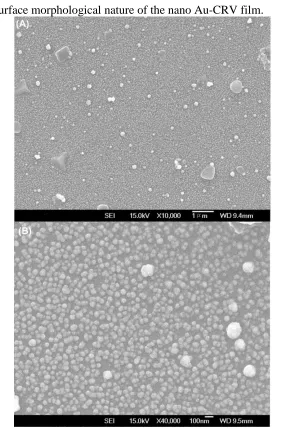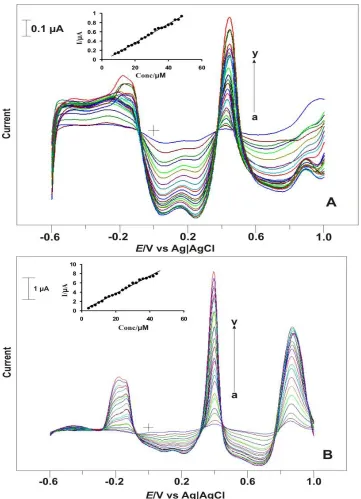Electrochemical Detection of Arsenic in Various Water Samples
Full text
Figure

![Figure 2. EIS response of (a) bare and (b) nano Au-CRV film modified GCE in pH 7 PBS containing 5 mM [Fe(CN)6]3-/4-](https://thumb-us.123doks.com/thumbv2/123dok_us/1936922.153456/6.596.92.501.198.499/figure-eis-response-nano-crv-film-modified-containing.webp)


Related documents
The aim of water supply companies should be to optimize drinking water treatment for arsenic removal to concentrations below <1 µg L − 1 , which is technically feasi-.
The worldwide health issue nowadays related to arsenic poisoning is due to consumption of high concentration of arsenic through drinking water (Yoshida et al., 2004)..
In this study seawater-neutralised bauxite refinery residues red mud (Bauxsol) are tested for their ability to remove arsenic from drinking water together with various
Paired supplied arsenic-mitigated water and end-use drinking water samples from 102 households were collected and analyzed for arsenic and thermally tolerant coliforms [TTC], used
Our study analyzed the total arsenic in human saliva of three groups, and found that, similar to urinary arsenic, with an increase in the arsenic concentrations in drinking water,
In this paper we use elicited subjective mortality risks of arsenic in conjunction with sample data on drinking water treatment expenditures to model household averting behavior
Participants were at risk of drinking arsenic-contaminated water (i.e., they either owned a contaminated tubewell or collected water from one) and had access to one of the
Paired supplied arsenic-mitigated water and end-use drinking water samples from 102 households were collected and analyzed for arsenic and thermally tolerant coliforms [TTC], used
![Figure 5. (A) EIS response of nano Au-CRV film modified GCE for the various concentrations of As (III) in pH 7 PBS containing 5 mM [Fe(CN)6]3-/4-](https://thumb-us.123doks.com/thumbv2/123dok_us/1936922.153456/9.596.119.480.70.608/figure-response-crv-film-modified-various-concentrations-containing.webp)

